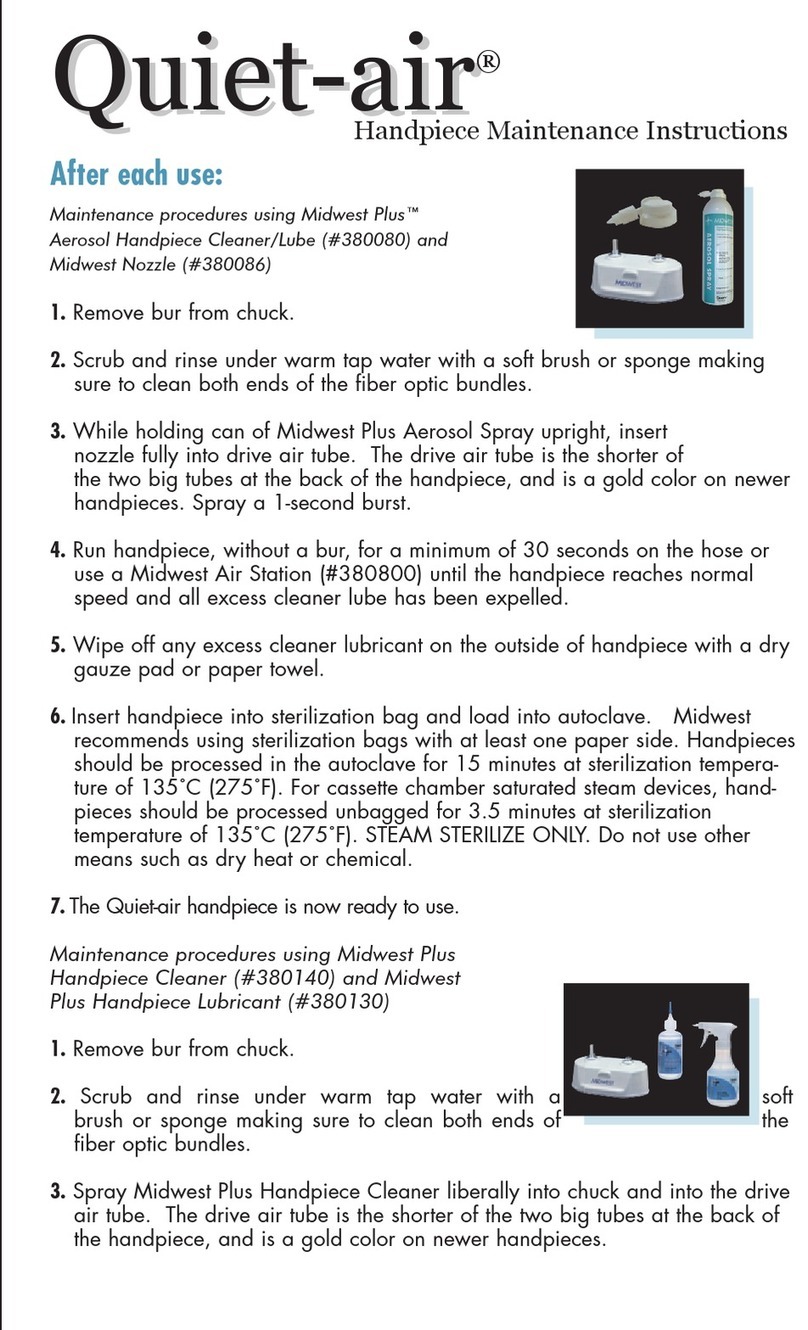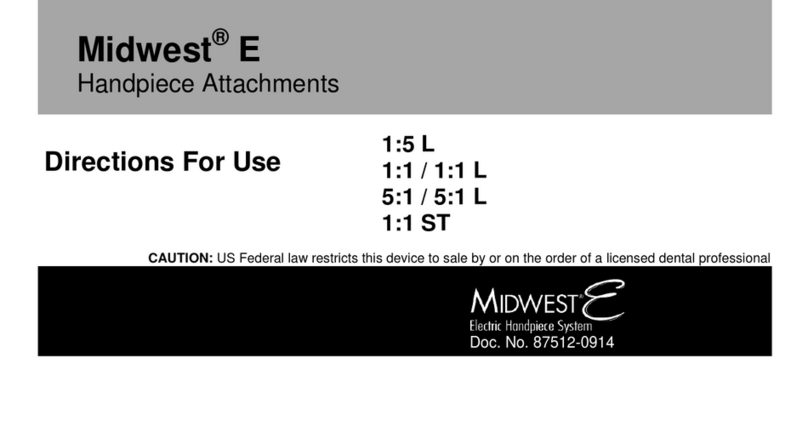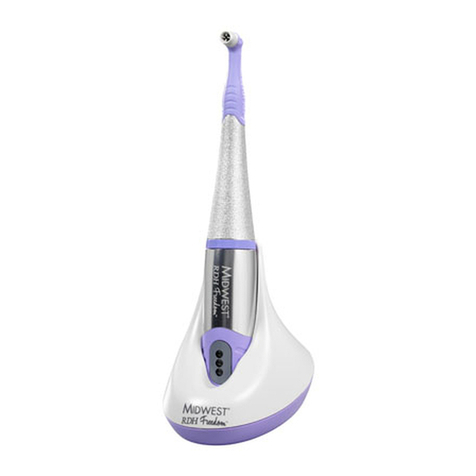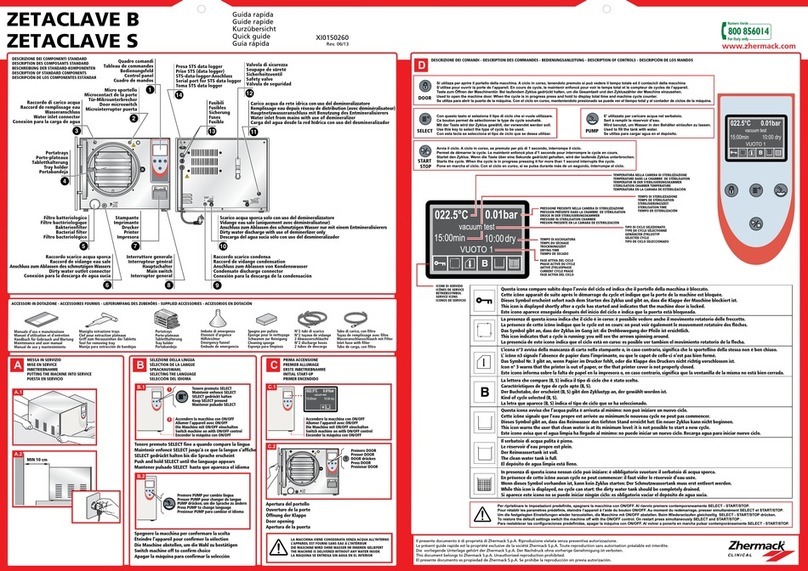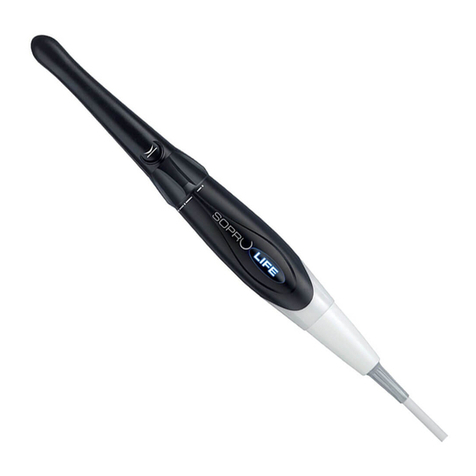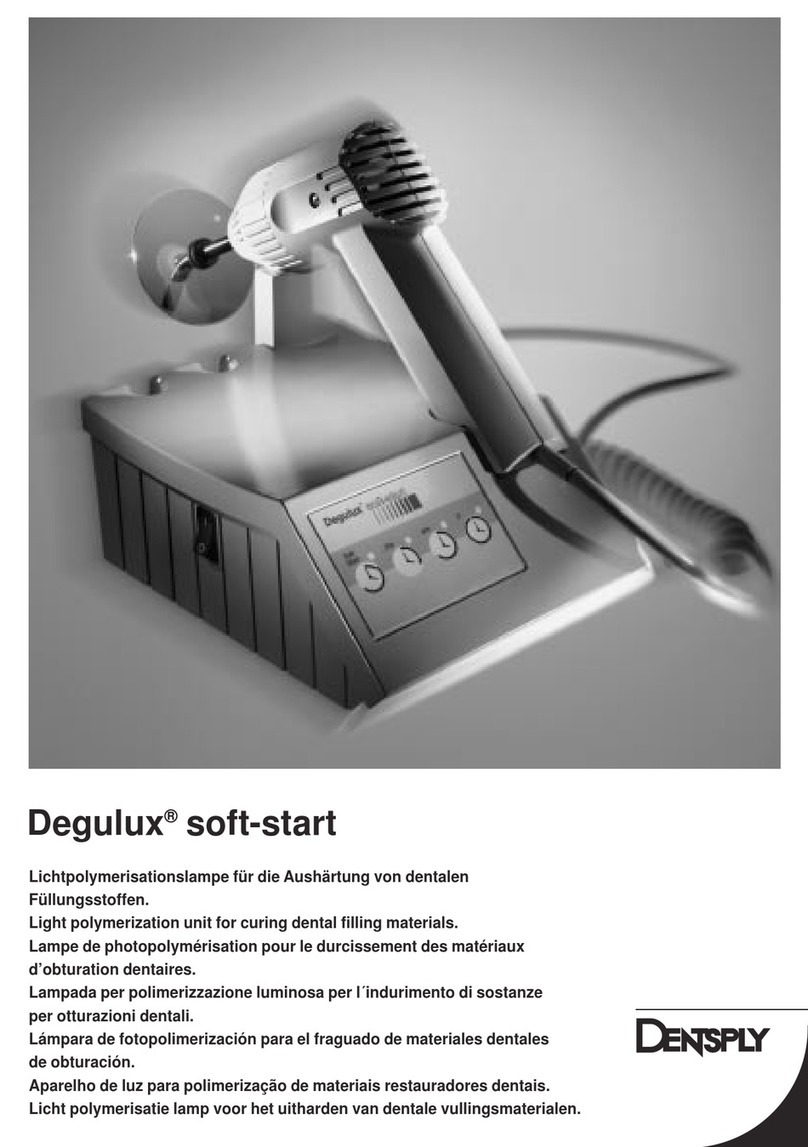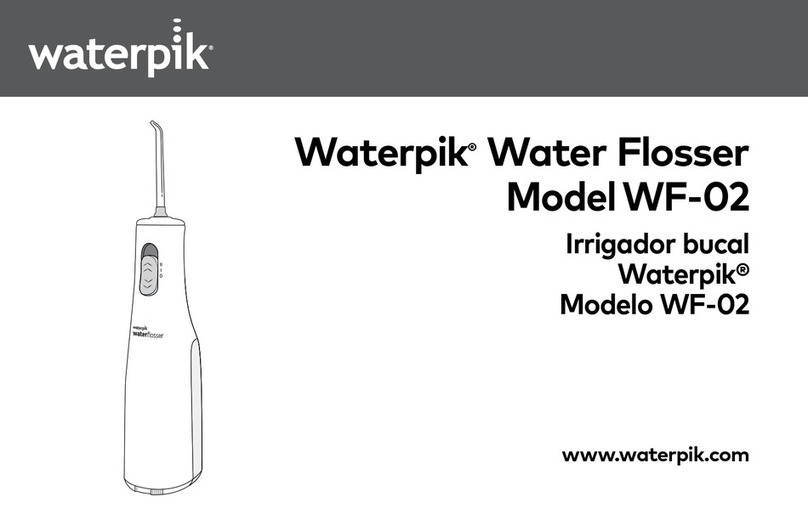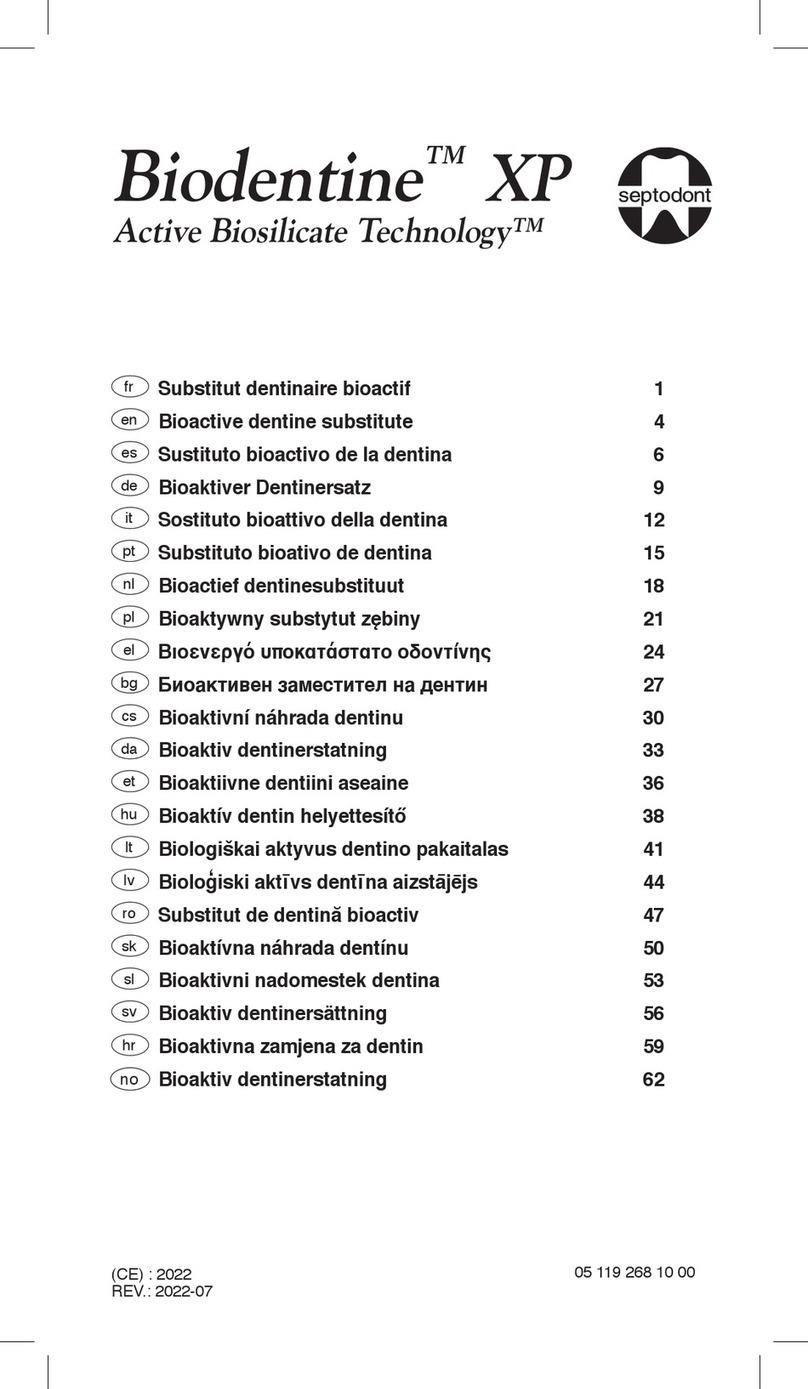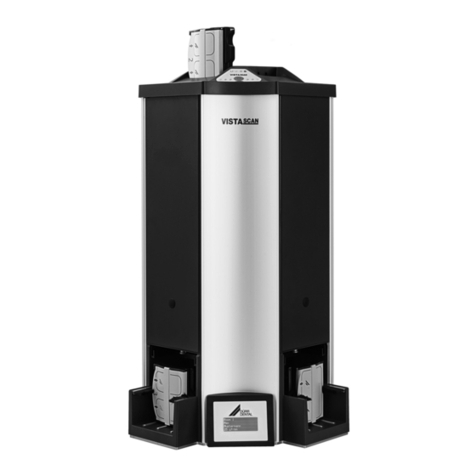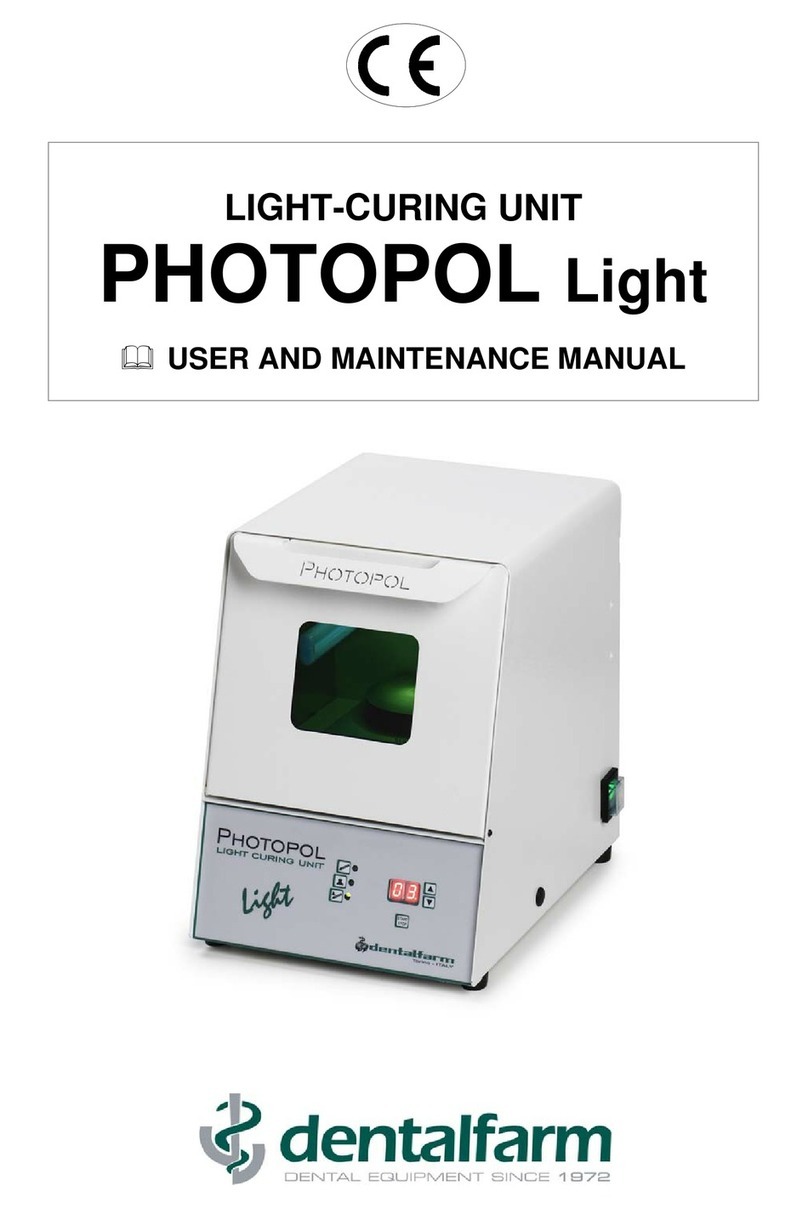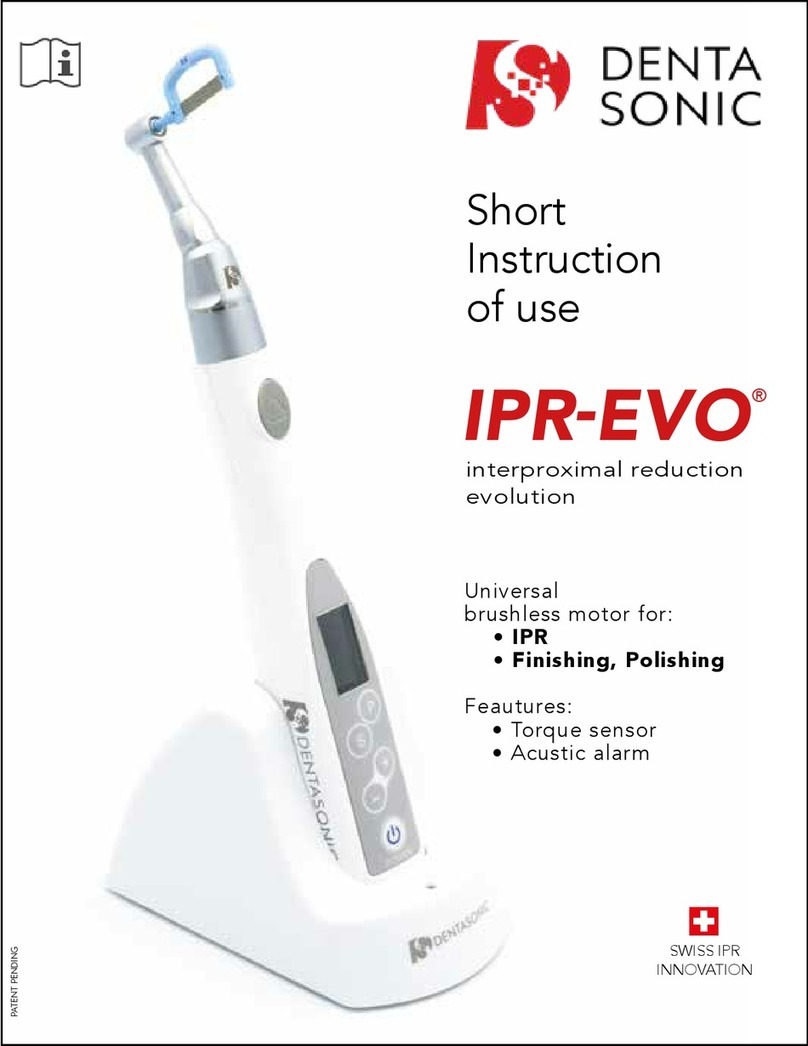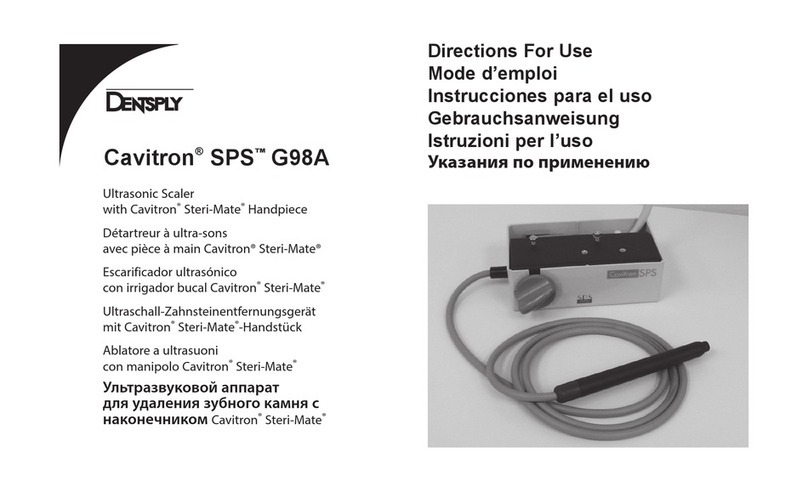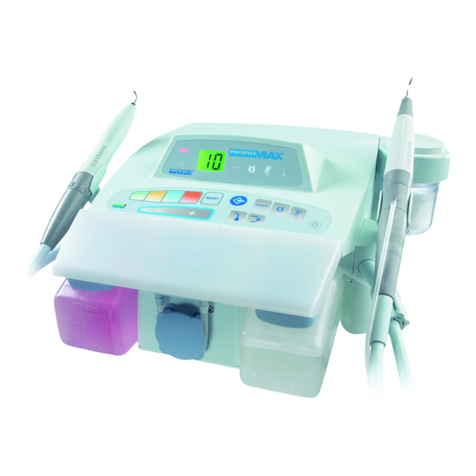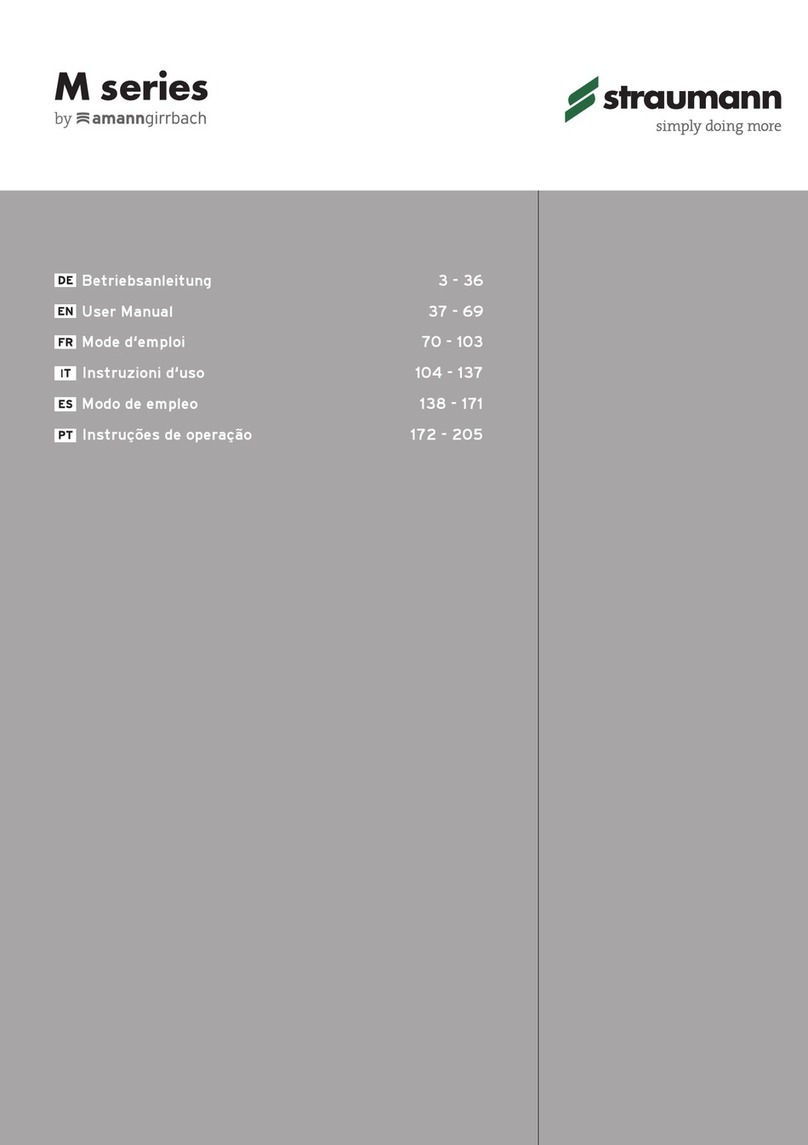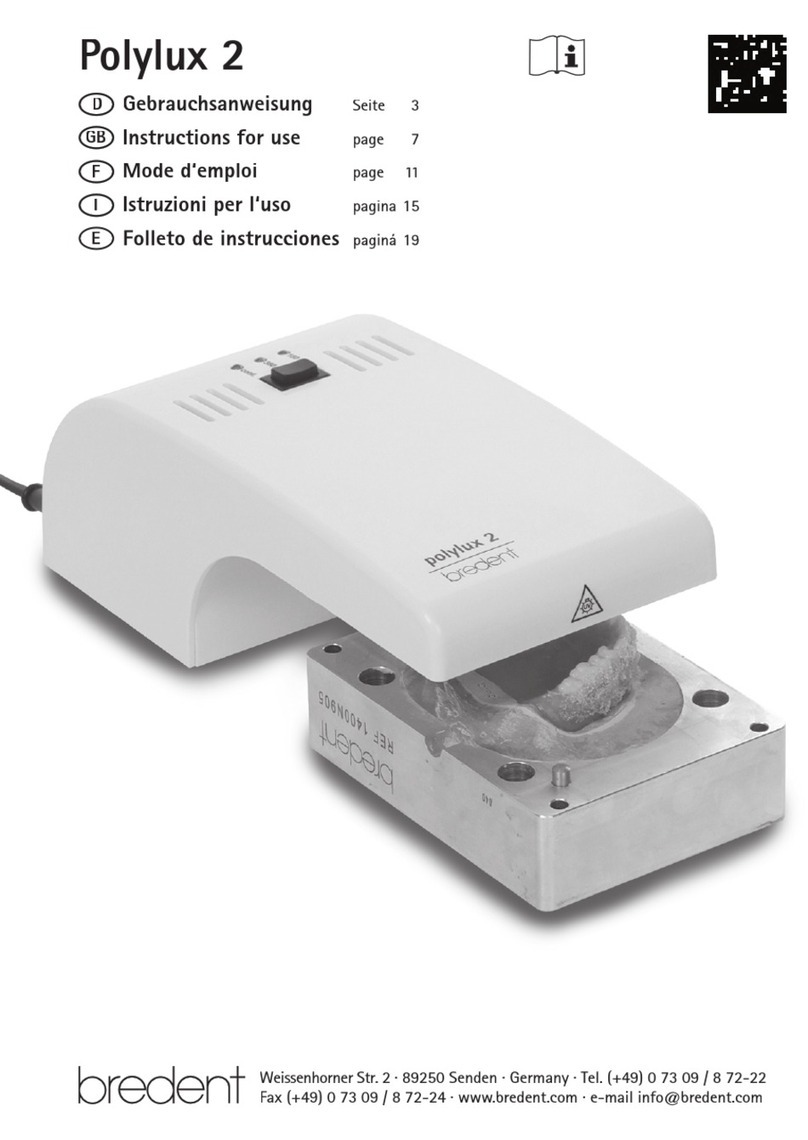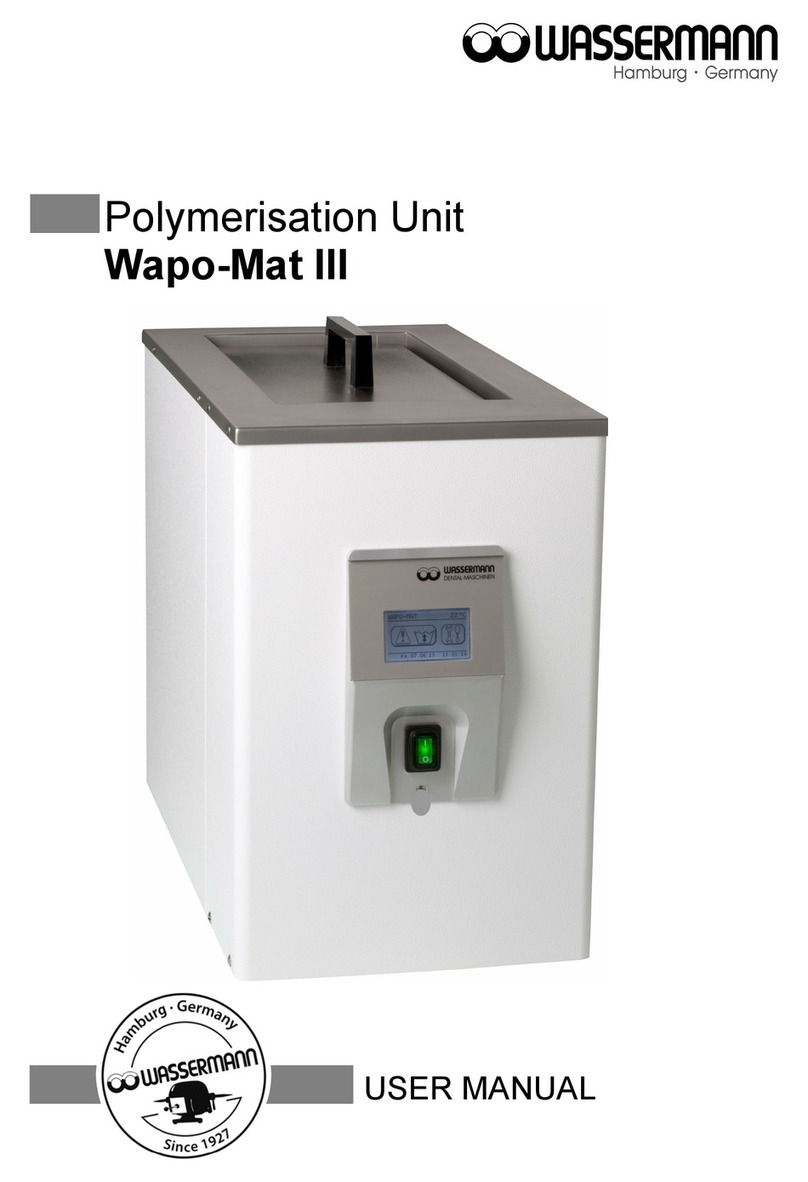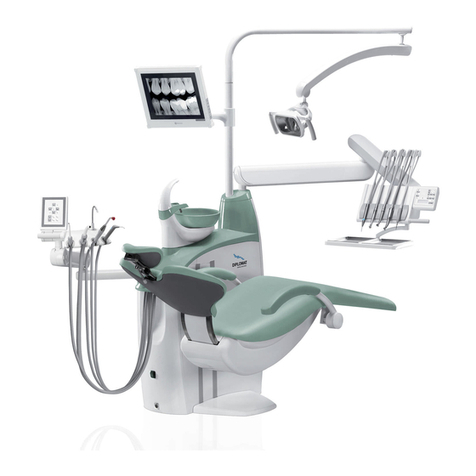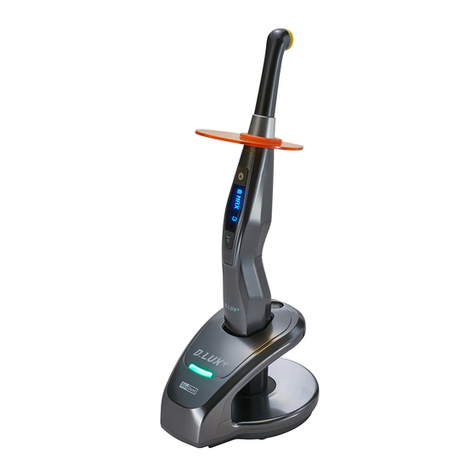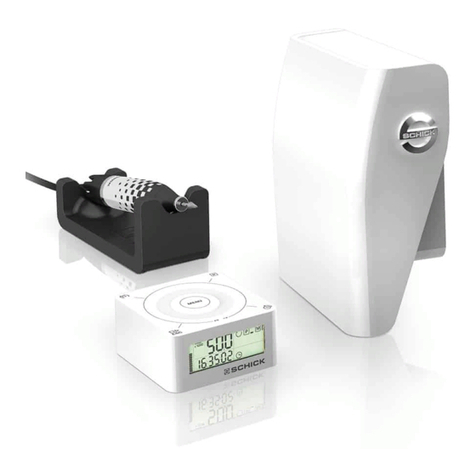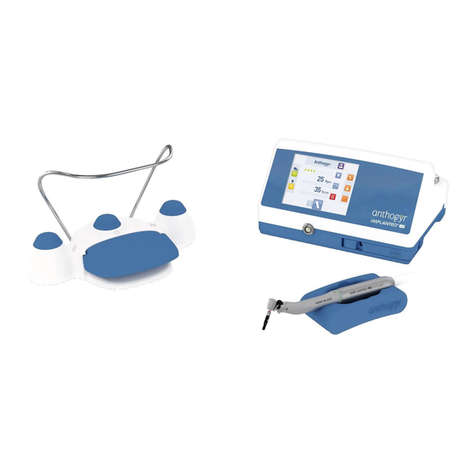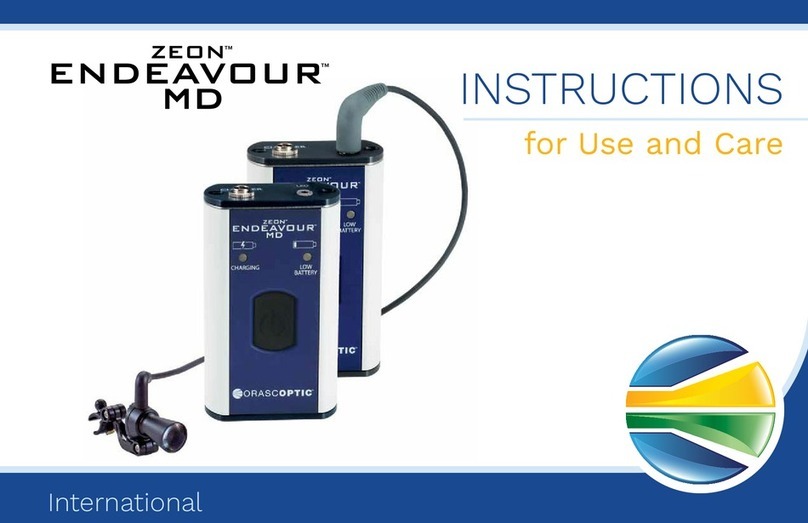Midwest RDH Manual

Midwest RDH Handpiece
Repair Procedure
The Midwest RDH handpiece is fairly common and is used by hygienists to clean teeth.
The most common problems for this handpiece include a bad prophy head or a dirty
motor. Both of these problems can be easily solved. As always, try to determine the
problem before disassembling the nosecone.
Some signs to look for are:
•The Motor is locked up:
oTry removing the prophy head and running the motor. If the motor now
runs freely without the head, simply replace the prophy head (Part# SO-
720445). If not, disassemble and overhaul.
•There is little or no torque when the motor is running:
oYou may have a cracked drive gear at the top of the nose section, or you
may have a dirty motor in need of overhaul.
•The nose section spins when the motor is running
oThis is a sign of a faulty prophy head, simply replace the head.
The repair procedures for each of these problems is addressed below
STEP 1
To remove the nose portion from the motor portion, secure the nose
assembly approximately ¾ up the shaft. Use about a ¾” collet to hold the
nose. Then wrap the motor housing with a strip of rubber and gently wiggle
the housing while simultaneously pulling up. This will allow the two pieces
to work apart.
STEP 2
Remove the two
pieces and set
them on your
work surface.
You can now see the retaining clip that was holding the two pieces together. Try to be
careful with this clip as it is hard to replace.

STEP 3
Now place the threads of the motor into a 9/16”
collet (far left picture). Remove the motor
housing by unthreading it in a counterclockwise
direction. Place the outer housing on your work
surface and then remove the motor canister
from the base piece (near left picture). It should
simply lift out with little resistance.
STEP 4
Take time to note that the motor canister sits
correctly in the base piece by aligning posts.
The two male posts in the base piece line up
with the two female holes in the canister. At
left, you can see the two meshing pieces.
Picture
Number
Part
Number
Description
1
N/A
Motor Housing Nose
2
N/A
Nose Drive Assembly
3
40605
Planetary Gears
4
40605R
Ring Gear
5
40605P
Spacer Plate
6
40535
Main Motor Housing
7
N/A
Motor Canister (Bearings inside are 40405C)
8
40487-O
Air Drive O-Ring
9
40422RDH
Color Bands
10
40487
Head or Base Piece

Parts 1 thru 5 of the Exploded View 1 can be exposed by removing a c-clip from
inside the top of the motor housing. If you do remove these items, it is best to clean
them and apply some grease to the planetary gears before reassembly.
STEP 5
Now we will disassemble the motor
canister. Remove the canister o-ring
and place the canister into a collet
and secure. Now place the tips of a
set of 45- degree needle nose pliers
into the two holes in the top plate of
the canister (far left picture). This plate is standard thread
so turn it counterclockwise to unscrew. Once the top plate is loose, lift it off the motor
and remove the canister from the collet by lifting the outer edges. If you grab the drive
gear, you will spill blades and springs about.
Picture
Number
Part
Number
Description
1
N/A
Motor Canister Top Plate
2
N/A
Gear and Rotor Assembly
3
40420
Rotor Blades
4
10019
Rotor Blade Springs
5
40520RH
Rotor Housing
6
N/A
Rear Motor Plate
7
N/A
Motor Canister Housing
8
N/A
Canister O-Ring
None
40405C
Internal motor bearings

STEP 6
With the motor disassembled as pictured in the previous exploded view, examine the
individual parts. Place the pieces in your ultrasonic cleaner and replace the blades and
springs if necessary.
STEP 7
Begin the reassembly process by placing the blades and springs into the rotor. Next, slide
the rotor housing over the rotor and blades. Follow this step by placing the rear motor
plate onto the rear shaft of the rotor.
STEP 8
The above picture shows the inside of the canister (left), and the back or bottom of the
rear motor plate (right). Be sure to insert the motor carefully into the canister. Line the
alignment pin in the plate up with the top hole in the inside of the canister. Both the pin
and the appropriate hole are at the top of the picture.
STEP 9
Now start to thread the motor canister top plate into the top of the
canister. This will keep the rotor from falling out as you place it back
into the collet holder. With the canister held firmly in the collet, use
your pliers to tighten the top plate.
If you had removed the large black canister o-ring, now is a good time to place it back in
the appropriate groove.
STEP 10
Secure the head or base piece in a 9/16” collet. Place the motor canister
into the base piece (far left picture). Refer to the picture in STEP 4 for
proper alignment. Now lower the outer housing over the motor and
tighten. The threads are regular so turn the housing in a clockwise
direction.

STEP 11
After the housing has been secured to the base piece, reinsert the motor nose assembly,
parts 1 thru 5 from the Exploded View 1 picture. Please remember to call the corporate
office if you need any help on this or any other step.
STEP 12
Now that the
motor has been
reassembled we
will look at the
nose section
repair process. Remember to only disassemble the nose section if there is a problem with
the top gear. None of the internal shaft bushings are available.
STEP 13
Place the nose section on a pair of V-blocks and locate the
gear retaining pin. Now that you have located the pin, tap
it out using a small thin punch. Remove the gear and
replace it with a 60219 gear and 60219A retaining pin.
The above picture shows the disassembled nose section. The top gear is replaceable, but
the main shaft is not, so be careful when handling the shaft. You can use your Midwest
Nosecone Tool (00014) to gain access to the shaft.
STEP 14
The last step deals with meshing the nose assembly and motor assembly back together.
Secure the threads of the motor in a 9/16” collet. Then lower the nose section down over
the motor until it rests on the large retaining clip. Half-cock the nose section so that part
of the retaining clip is feeding down into the top of the motor housing. Then, while
applying downward pressure, press the final edge of the clip into the housing with a small
flat screwdriver.

Midwest RDH Prophy Nosecone Repair
Disassembly (Note: Complete Nose Assembly is now
available, part# 40534. $119ea. As of 10/2011)
STEP 1
Insert a 9/16” Collet into your table mounted
collet holder. Next, insert the handpiece threads
into the collet and secure. Then, wrap the upper
portion (Nose section) of the RDH with a strip of
Gum Rubber (00032). Once tight, slowly jiggle
the nose section while also pulling up. This
should release the nose section from the main
RDH Body.
STEP 2
Insert your 00014 MW Nosecone wrench
into the opening on the bottom of the nose
section. The two teeth on the wrench will
exactly match the notches in the internal
nosecone nut. Pushing hard into the nut,
unscrew in a conventional counter-
clockwise motion. This will allow you
to remove the internal nosecone main
spindle assembly.

STEP 3
To remove the small brass clip washer, take your exacto knife
and carefully slip it out of its groove. Then, slowly slide it up
and off the end of the chuck.
STEP 4
Once the brass clip washer has been removed,
you can slide the 60102 spindle bearing up
and off of the chuck as well. If the chuck is
broken, simply tap out the small 60219A pin
holding the chuck and drive fork together.
1
Spindle Nut
N/A
2
Drive Fork
N/A
3
Spindle Bearing
60102
4
Chuck
40520
5
Bearing Spacer
N/A
6
Loading Spring
40410
Not Pictured
Not Pictured
Brass Clip Washer
Complete Nose
40520A
40534

Assembly
STEP 1
If you did replace the chuck, simply attach it to the drive fork
with a 60219A pin. Next, slide a new 60102 bearing over the
spindle and press it down to the bottom spindle flange. Then,
carefully slide the brass clip washer down over the chuck until it
clicks into the groove on the chuck, just above the bearing.
STEP 2
Insert the assembled main spindle into the open, non-
threaded, end of the spindle nut.
STEP 3
The bearing spacer has two very
different sides. The bottom is
thin with an internal bevel, while
the top edge is thicker with a flat
surface. Insert the main spindle
assembly into the thinner,
beveled edge of the bearing spacer. Next, while holding the assembly upright, slide the
loading spring over the end of the chuck so the it sits on the upper, flat edge of the
bearing spacer.
STEP 4
Now, while holding the spindle assembly upright, slide the
00014 MW Nosecone wrench over the drive fork and into the
notches on the bottom of the spindle nut. Next, while still
holding the assembly upright, lower the main nosecone
housing down over the spindle assembly. Once lowered,
thread the spindle nut into the nosecone in a traditional
clockwise direction.

STEP 5
Now we must connect our reassembled nose section to
the main RDH Body. First, secure and compress the
large C-Clip at the bottom of the nose section with a
large Zip-Tie, (larger ones work best).
STEP 6
Once you have secured and compressed the large C-Clip,
carefully lower the nose section
onto the motor assembly, which
should be secured, once again in a
9/16” collet.
Lower the nose section until the
C-clip slips into the upper edge of
the main RDH body and the Zip-
Tie has been pushed up to the
main knurled edge of the nose
section. Then, simply cut the Zip-
Tie loose with an exacto knife and
firmly push the nose section all the
way into the main RDH body.
STEP 7
Your Midwest RDH Should now be fully assembled and ready to
test. Many times, the colored rubber band at the bottom of the
motor will be missing or in poor condition. Replacing this band
improves the look of the handpiece greatly and we recommend
this addition with most RDH repairs.
The bands are part# 40422RDH and come in several colors.
Other Midwest Dental Equipment manuals
